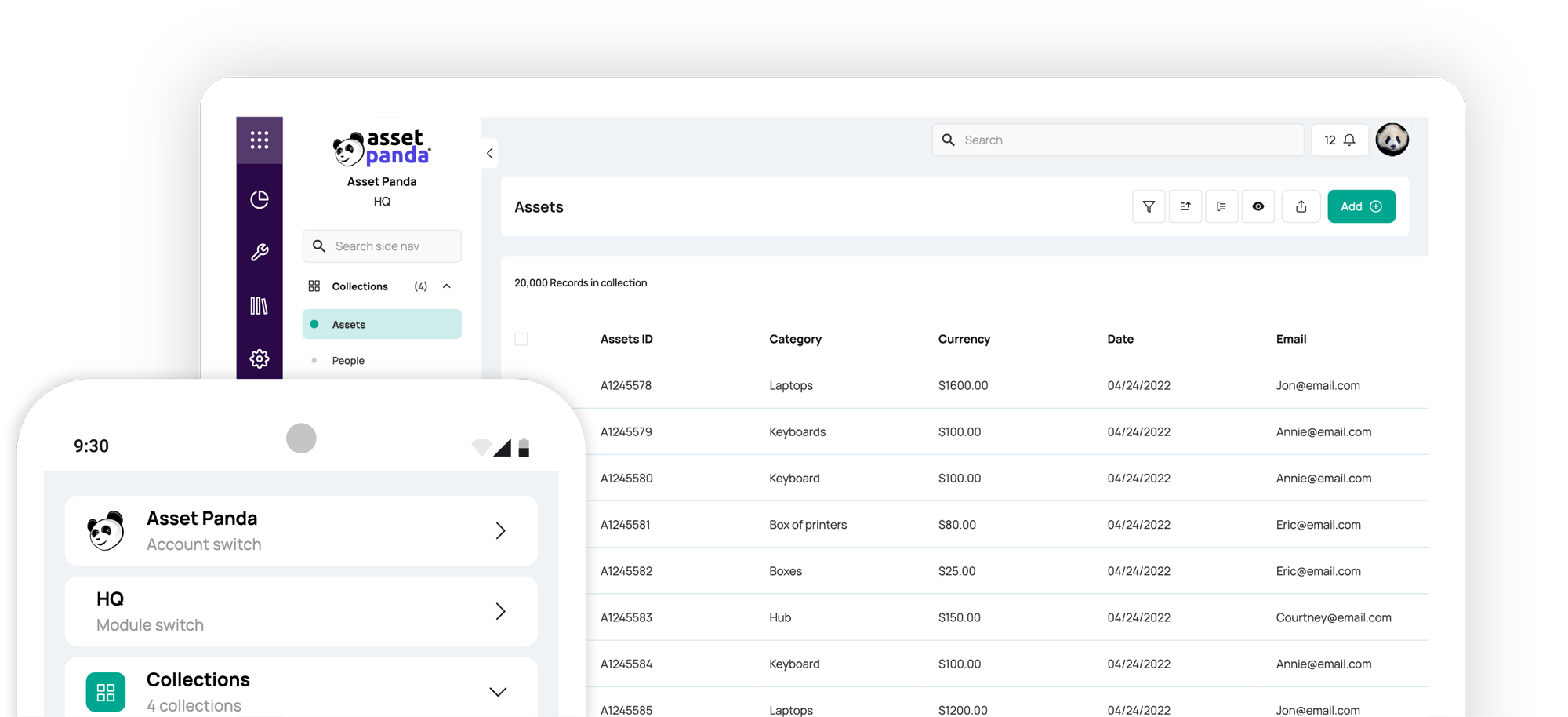The Latest Trends in Asset Tracking for Modern Businesses
Blog

Table of Contents
Take Control of Your Assets
A personalized demo is just one click away.
The future of asset management is already here. The industry is always evolving, and companies that don’t keep informed of the latest trends in asset tracking risk falling behind. That's not to say that every new trend is worth adopting, or is even a good fit for your organization. But maintaining an up-to-date picture of the current asset tracking landscape is essential to picking and choosing the most efficient and modern solution.
From artificial intelligence to digital twins, which of the latest solutions are likely to impact the future of asset tracking, and which ones are passing fads? We've developed a list of the most buzz worthy innovations in asset management, affecting everything from tagging to software solutions. Here are the most promising trends in asset tracking that you need to know about.
1. Artificial Intelligence for Asset Management
Artificial intelligence (AI) has been revolutionizing multiple global industries from healthcare to finance—and is a top trend in asset tracking as well. AI is capable of automating repetitive, time-consuming tasks like data entry, inventory management, and audits. This frees up human workers to focus on more interesting work while minimizing the risk of human error at the same time.
AI can also be implemented as part of Internet of Things (IOT)-powered asset tags which continuously and automatically sense conditions like an asset’s real-time temperature. This can help organizations gain more insight into their assets’ status and performance and make better-informed decisions.
Whether used for software or tagging, AI excels at seeking out and identifying patterns. An AI-powered tag can identify an anomaly in an asset’s condition and automatically suggest maintenance. Meanwhile, a software solution that provides AI-powered reports can predict equipment failures, identify underused assets, and point out opportunities for enhanced asset optimization. A study by McKinsey suggests companies that AI-powered predictions can increase asset lifespans by 20 to 40%.
2. Digital Twins
A digital twin is a detailed virtual model that matches the characteristics of an organization’s asset. Digital twins mirror their real-world counterparts, providing a benchmark for when the physical asset was deployed, is likely to require maintenance, and when it may need to be retired. Digital twins use real-time asset tracking data combined with machine learning to make these predictions.
Multiple industries can take advantage of digital twins, using them to represent assets as variable as factory equipment or vehicles. The more operational data that the digital twin accumulates from real world assets, the more accurate its predictions become. An increasing number of organizations are taking advantage of digital twin technology: the market was valued at USD 12.9 billion in 2022 and is predicted to have a compound annual growth rate of 36.3% through 2030.
3. Cybersecurity for Asset Management
Cybersecurity asset management is a growing subset of asset management targeted at protecting an organization’s technology from cyber threats. As hackers become more organized and develop more sophisticated attack vectors, cybersecurity asset management is the first line of defense for keeping an organization’s technology assets and their onboard data safe and secure.
Malware attacks can occur when an organization doesn’t have an accurate picture of its technology assets through an asset tracking software solution, leaving endpoints vulnerable to attack. Cybersecurity asset management best practices mean a standardized strategy that incorporates all of an organization’s technology assets. Through a secure network, your cybersecurity asset management strategy can implement routine technology maintenance that includes regular checks for updates. Since the cyber threat landscape is changing by the day, your organization’s cybersecurity asset management should, too. Automated processes designed to run on your and your employees’ machines can detect and install unimplemented patches as quickly as they are developed while detecting operational inefficiencies at the same time.
4. Sustainability
As climate change becomes an undeniable fact of life, an increasing number of organizations are listing environmental sustainability as a top priority. Forward-thinking companies are not only focused on meeting the bottom line, but leaving the smallest-possible environmental footprint at the same time.
Advanced asset tracking technology can help companies stay on top of their sustainability benchmarks. Enhanced asset tags can monitor vehicle emissions while automated software can map out more efficient vehicle routes and minimize unnecessary trips. Advances in asset lifecycle management can help organizations get the most out of their assets for longer, improving efficiency and reducing waste. Real-time asset tracking allows companies to manage their assets with greater precision, ensuring they minimize carbon emissions that come from excessive, redundant, or underutilized assets.
5. Robotic Process Automation
Regular asset audits are an essential part of asset management, but not every fixed asset is easy or even safe to inspect. In harsh conditions like chemical plants, it would be safer for organizations to deploy robots equipped with sensors in order to perform auditing tasks in a human’s place.
By installing hardware like sensors and software via a robot’s onboard API, robots can perform a number of auditing and even maintenance tasks to inspect asset health. Robots could replace the need for predictive maintenance by simply measuring asset health in real time more easily and often than humans can. American robotics design company Boston Dynamics predicts that in the very near future, organizations will be able to perform thermal scanning, radiation detection, gas detection, acoustic modeling, vibration analysis, and gauge reading all via mobile robot workers.
The Future of Asset Tracking Software
As new technologies are developed and new innovations are adopted into standardized systems, the field of asset management is always in flux. When choosing an asset management solution, it’s important to find an option that doesn’t only consider trends in asset tracking today, but tomorrow as well. The right solution will be modern, include automated features, and capable of integrating with other cutting-edge software to create a holistic solution.
Asset Panda’s innovative solution helps organizations of all kinds manage all their assets and workflows in one convenient platform. With powerful AI features like column mapping and database configuration, your team can seamlessly import data and create an intuitive asset management program. Plus, with automations and real-time alerts, you can save even more time managing your assets and ultimately improve your bottom line.
Find out how Asset Panda can work for you—right now and beyond—when you request your personalized demo today.
Take Control of Your Assets
A personalized demo is just one click away.
Related News & Press
Learn more from a solution specialist
Schedule a demo to find out how you can transform your workflows with Asset Panda Pro
Contact our team at (888) 928-6112



